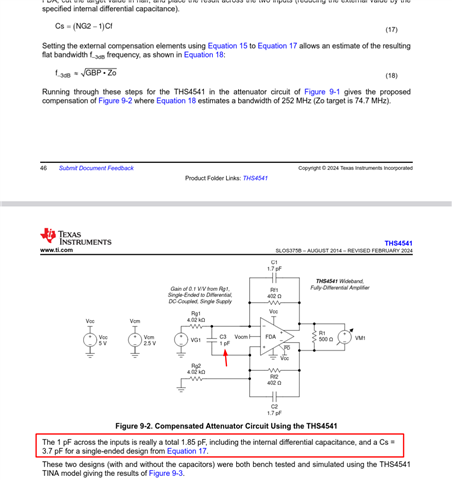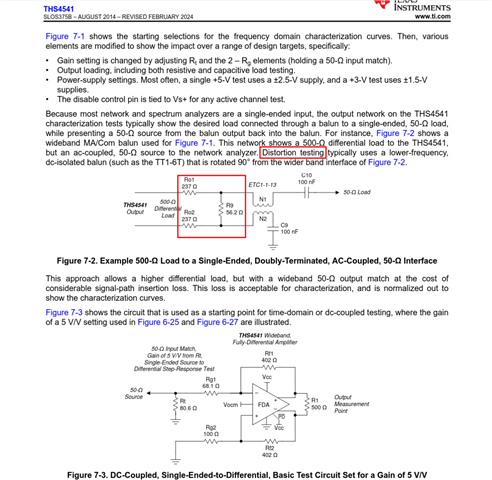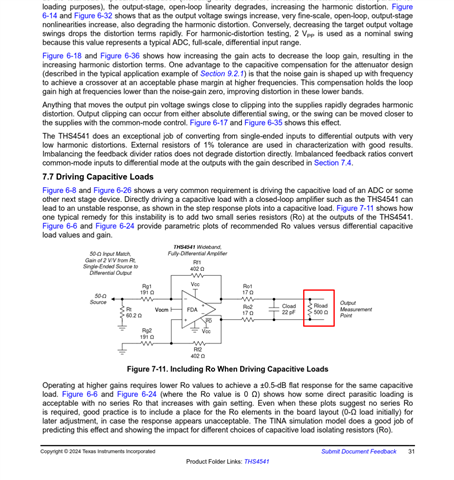- Ask a related questionWhat is a related question?A related question is a question created from another question. When the related question is created, it will be automatically linked to the original question.
This thread has been locked.
If you have a related question, please click the "Ask a related question" button in the top right corner. The newly created question will be automatically linked to this question.
Tool/software:
THS4541 can I configure the gain to be reduced by 2x, and only the resistor magnified by 2x is recommended in the datasheet, can I swap the 402 Ohm and 191 Ohm resistance values of Rf and Rg to achieve the purpose of shrinking the signal? Can the scaled-down distortion and THD indicators still refer to the 2x magnified chart parameters?
Hi Ting,
I am a little confused about your exact question, but it looks like you want to have an attenuator circuit am I correct? If so section 9.2.1 in the datasheet highlights an example of this type of circuit using the THS4541. In this example they keep the 402Ohm feedback resistors the same and increase the Rgs resistors accordingly.
Best regards,
Ignacio





Hi Ting,
That is correct for the calculations used in the set of equations we use the GBW product value of 850MHz. Using the same steps I also obtained values similar to yours. I was able to simulate the circuit using these values and obtained a relatively flat frequency response which checks out. As for the load, it does not have to be 500ohms as the device can work with a range of values. The load will have slight effects on things like distortion and stability but should not be an issue if it's a different value.
Best Regards,
Ignacio
Hi Ignacio,
Thank you for your patience in reading my estimation process and verifying my parameters. Thank you again and wish you a Merry Christmas! Hopefully it's not too late.
Best Regards,
your friend